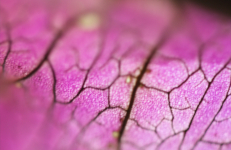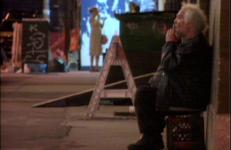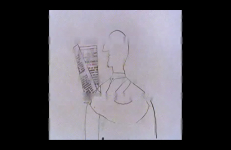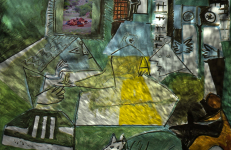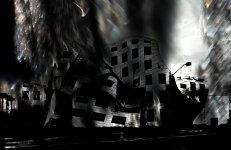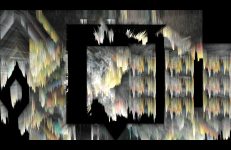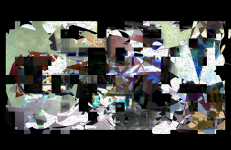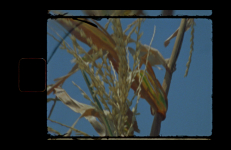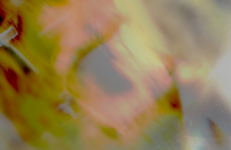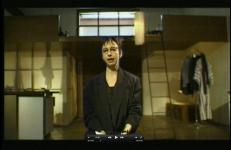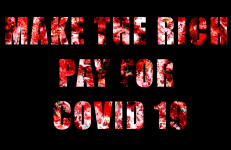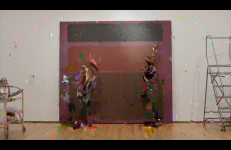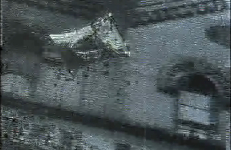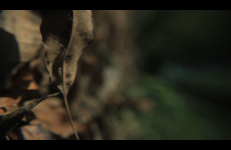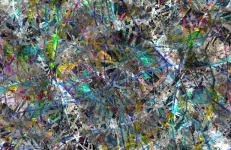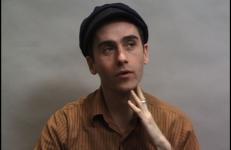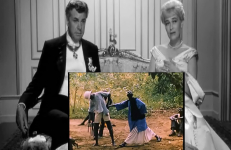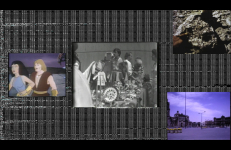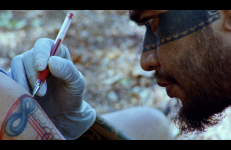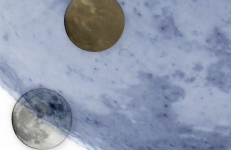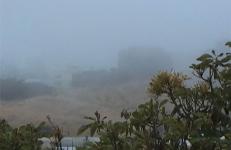This is the flowers under attack. An entire ecosystem under attack. This is the omen of the bugambilia. This is the pulsation of the nervous trance of petals in the anthropocentric times. Part of the Hauntology series.
Experimental Film
DIRECTOR’S STATEMENT/SUMMARY: This film centers around one performance, when Holland-based musicians, The Ex, visited New York to play a concert. This performance is intercut with city scenes, first from Amsterdam and then New York, of construction sites, street life, and protests against the Iraq war and the Bush administration. The construction site scenes relate to the band's dedication to music as a realm for collaborative building and creative destruction.
"A meditation on history, memory, and change in Central and Eastern Europe, Buried in Light is a non-narrative journey, a cinematic collage. Cohen’s “search for images” began at a time of extraordinary flux, as the Berlin Wall was dismantled—opening borders yet ushering in a nascent wave of consumer capitalism. What he saw struck him as a profound paradox: the moment Eastern Europe was revealed was simultaneously the moment it was hidden by the blinding light of commercialism.
A Kafkian vision of the New World. The arrival of Karl Rossman to the contemporary Babylon under the spell of the paranoid avant-garde. Kinetic coexistence of the archaic forms in dissolution.
The post-Platonic cave in whose interior the nuclear catastrophe to come is disseminated.
As regional character disappears and corporate culture homogenizes our surroundings, it's increasingly hard to tell where you are. In Chain, malls, theme parks, hotels and corporate centers worldwide are joined into one monolithic contemporary "superlandscape" that shapes the lives of two women caught within it. One is a corporate businesswoman set adrift by her corporation while she researches the international theme park industry. The other is a young drifter, living and working illegally on the fringes of a shopping mall.
This is the vision from the “chinampas", the hectic life in the floating gardens, an ancestral system of audiovisual planting.
An attempt to explore the metamorphic drama of expanding entomological entities. Sparkles of the screen-membrane in erosion.
Cinnamon presents a glimpse into the world of African American drag racing. It follows the consistent routine of a bank teller and a mechanic as they prepare for the sport. Once the routine is disrupted, the result of the race comes into doubt. The bank teller is a driver who tries to stay focused before races. The mechanic’s job is to constantly examine the driver’s behavior. He has to adjust the racecar to the driver’s skill and ability and modify the racecar for the weather conditions.
Circle's Short Circuit is an experimental feature-length work with neither a beginning nor an end—the film can be viewed from any random point. It moves through a circle of five interlocking episodes that describe the phenomenon of interruption in contemporary communication through various forms and modes, investigating causes, consequences, and side-effects. Genres shift along the episodic path of this circle, moving from documentary to essay, through collage, simulated live-coverage, and silent film.
This is Rothko's haunted painting and its circular detour. Bloody suppuration and enchanted absorption as an omen in times of pandemic vortex.
This is the nest image, the camouflage image, the vortex image, the haunt image, the net image, the drill image, the wire image, the cocoon image, the haunted image, the interconnected image, the pandemic image. The haunted space of the image.
In this 2001 interview, filmmaker Jem Cohen discusses the origins of his film philosophy, and the circuitous route he has taken in his pursuit of an anti-narrative film practice outside the mainstream. Cohen sheds light on the many influences that have impacted his sentiments towards conventional film, and his desire to eschew both classical avant-garde and theatrical filmmaking in favor of a model rooted in the tradition of the 1940s New York School of street photography. Cohen also locates his aesthetic as being impacted by the 1970s hardcore and DIY scenes he was exposed to as a youth in Washington, DC.
In this 2006 interview, filmmaker Jem Cohen discusses his early interest in art, his family’s welcome antipathy towards commercialization, and his unconventional, anti-mainstream film practice. In particular, Cohen discusses his film This is a History of New York, and how this piece exemplifies his interest in the “territory of sensation” rather than simple visual descriptiveness. Cohen concludes by discussing the role of archiving in his practice, and how compulsive documentation of the quotidian and unexceptional can result in the empowerment of the everyday.
Colonial Transfer vindicates the eidetic chasm that produced the arrival of television in the cinema as well as the absorption, transduction and digital expansion of television and historical film archives, all linked by the negentropic outburst of a source code in trance. This is the state of ever-expanding media landscape in the post-covid quarantine. Our state of space-time.
A synaesthetic S16mm portrait made between French Polynesia and the French province of Bretagne, Color-Blind recruits the restless ghost of Paul Gauguin as an uneasy spirit guide in excavating the colonial legacy of a decidedly syncretic post-colonial present.
Comalli is the ancestral tool to cook our sacred food, our corn and tortillas. The circular tool that represents the dark side of the moon on which our earthly food burns. The cosmic dance of food and fire that nourishes our bodies. Part of the Lunar Films series.
A poetic meditation on distance, Come Closer is a short and peripatetic film, casting an affective web between the locations of Lisbon, San Francisco and Brazil. Focusing on Brazilian-Algerian filmmaker Karim Aïnouz, musician Derrick Green –– the filmmaker’s brother and lead singer of Brazilian band Sepultura –– and her own work produced in Lisbon since 1992, Come Closer can be thought as a meditation on friendship and saudade.




